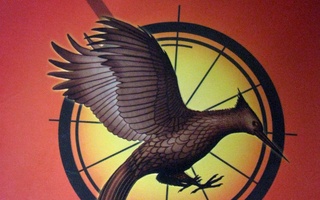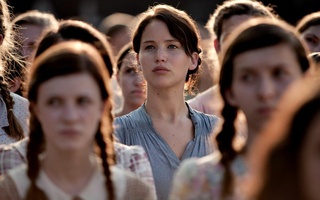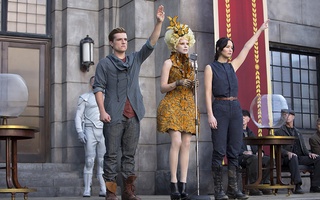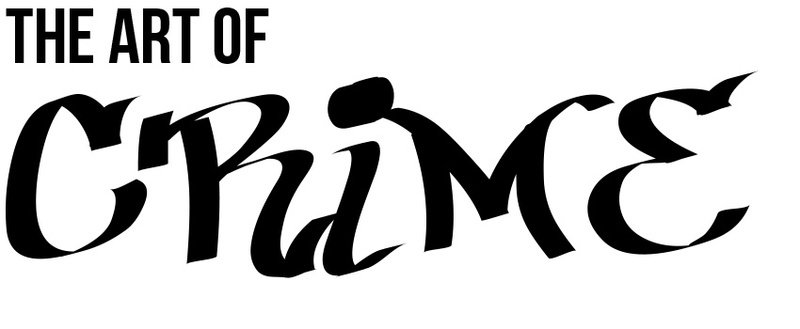Katniss Everdeen from the "The Hunger Games" series, Hit-Girl from "Kick-Ass," Arya Stark from "Game of Thrones." All three of these pop culture icons have one very important thing in common (besides being extremely sassy): they are all incredibly violent. In books, films, and comic books, these three young women join a new crop of heroines who are adept at killing and often even enjoy it. Katniss Everdeen slays fellow tributes with her bow and arrow. Hit-Girl shoots down malicious drug dealers. Arya Stark takes revenge on those that have wronged her or her family, and she spares them no pain with her sword.
And yet, even though these three women are just as violent as their male counterparts, somehow their violence seems more acceptable. Instead of turning people off with their bloodthirsty acts, these three female killers are often seen as examples of empowered, tough female role models. But with these labels, an uncomfortable question arises: are these women seen as powerful because they are violent? In other words, for viewers and readers who worship these fierce women, does violence equal power?
There’s definitely no doubt in my mind that the violence makes them popular. In the trailer for "The Hunger Games 2: Catching Fire," which opens in theaters on Nov. 22, we see Katniss, played by Jennifer Lawrence, looking confident and smooth as she wields an axe or shoots an arrow into a moving target. When I went to see "Kick-Ass 2" this summer, many audience members cheered when Hit-Girl slaughtered five "bad guys" at a time. I have to admit, I was one of those audience members. But not one person cheered when Kick-Ass, the male protagonist of the story, killed anyone off, even though he also fights for the good side.
In a 2012 Marie Claire article, the magazine rated the "most badass heroines" of pop culture. Katniss Everdeen joined the ranks of The Bride in "Kill Bill" and Carrie Mathison of "Homeland." In the description explaining Katniss’s "badassitude," the author noted her main characteristics as "beautifully braided" and "quiver-slinging." Katniss’s unique ability to kill with her bow and arrow is a major reason why she is so popular in the trilogy. Of course, she would still be the heroine even if she didn’t happen to be an amazing hunter. Her bravery and resilience set her apart even without these skills. But making Katniss a cold killer is a huge part of her charm and appeal. It is one of the reasons it is so easy to root for her; we know she has the power to win. The same goes for Arya Stark and Hit-Girl. While they are already likable and exciting characters because of their fiery spirits, it is when they enter into warrior mode that they become unbelievably fierce and impressive.
Without their abilities to fight, all of these female characters could easily just have been feisty victims. Katniss might have needed Peeta to save her after all. Arya Stark could have been a more volatile version of Sansa, putting up with her circumstances but definitely not liking them. In the end, their violence is what prevents them from being victims, and this is a troubling thought. This would not be concerning if there were more badass female heroines that weren’t violent. But as it stands, these three are becoming the norm, rather than the outliers. Our pop culture seems to now almost blindly worship the warrior woman.
It is also interesting to note that each of these three characters are described as tomboys and fit in more with the masculine characters around them than the feminine ones. Arya Stark even pretends to be a boy for the large part of "Game of Thrones." Hit-Girl finds it impossible to fit in with different groups of girls at school. This suggests that these female characters are popular not only because of their violence but also because of their masculine traits. They are not traditional "girls," and this is supposed to be a good thing. Indeed, it’s very rare to see a movie or TV show where a "badass" heroine is also traditionally feminine. If she is presented in this way, she is often also hyper-sexualized and wearing all leather in some ridiculous fashion.
I am a fan of all of the characters mentioned here and often wish I could be a badass heroine, fighting for the greater good, perhaps masked on the streets of Cambridge. But we should also push back against these characters becoming the norm. There must be room for ambiguity in heroines of pop culture, just like there are many shades of gray for male heroes. Heroines that avoid violence rather than exulting in it can also be considered cool and fiery. In the end, we must remember that killer ladies are fun, but they are dangerous too.
—Staff writer Isabel H. Evans can be reached at isabel.evans@thecrimson.com.
Read more in Arts
Erasing The PastRecommended Articles
-
 'The Hunger Games' Drinking Games
'The Hunger Games' Drinking Games -
The Gender-Neutral GamesThe Hunger Games largely avoids the restrictive lens of gender. Within Collins’ literary world, Katniss is characterized neither as feminine nor as feminist; she is merely a complex, humanized character.
-
 ‘Hunger Games’ Will Sate Book’s Fans
‘Hunger Games’ Will Sate Book’s Fans -
The Odds Ever in Our FavorAs far as I was concerned, the freshman world was dog-eat-dog, tribute-spear-tribute. With every day came a new rush toward the Cornucopia to gather items perceived as essential to survival. Some were harder to acquire than others. Everyone could lay their hands on everyday necessities like those in Katniss’s backpack: an umbrella, a Snuggie, Advil, Adderall, condoms.
-
 "Hunger Games" Catches Excitement
"Hunger Games" Catches Excitement














